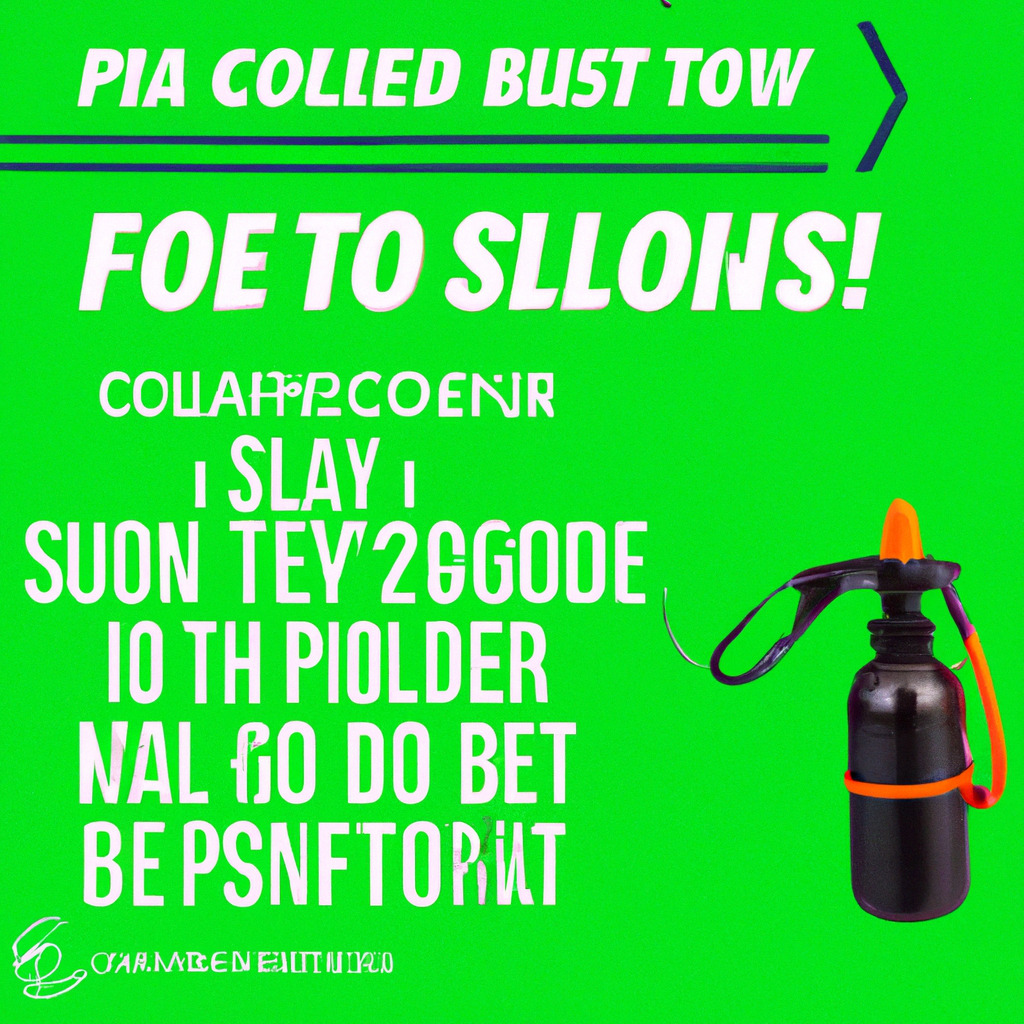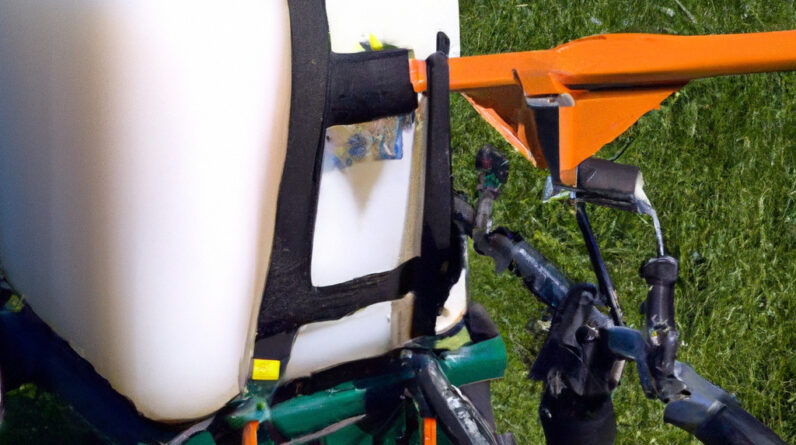Imagine this: you’re out on a beautiful sunny day, ready to nourish the plants in your garden with your trusty Solo backpack sprayer. But suddenly, you’re left puzzled when it refuses to build pressure to spray. Don’t worry, this isn’t a sign that your gardening efforts are in vain. In this article, you’ll find out exactly why your Solo backpack sprayer isn’t building pressure and you will discover some handy tips and solutions to resolve this issue promptly. Keep your green thumb ready because your healthy garden paradise doesn’t have to wait much longer.

Understanding the Mechanics of a Solo Backpack Sprayer
Solo backpack sprayers are efficient tools used for many gardening and farming tasks, such as applying pesticides, watering plants, or cleaning outdoor furniture. To successfully operate these devices, you need to understand their basic mechanisms.
Basics of How a Solo Backpack Sprayer Works
You operate a Solo backpack sprayer by pumping the handle, which builds up pressure within the tank. This pressure creates a force that drives the liquid through the hose and out of the nozzle when the trigger is squeezed. The amount of liquid that gets dispensed at a time depends on the pressure settings and nozzle type.
Role of Pressure in the Operation of a Solo Backpack Sprayer
Pressure is key in determining how well your Solo backpack sprayer performs. Without the right amount of pressure, the liquid won’t be sprayed out evenly or at all. The higher the pressure, the more potent the spray pattern becomes, enabling it to reach more extensive areas or denser foliage.
Signs That Your Solo Backpack Sprayer is not Building Pressure
Understanding the signs of lack of pressure is critical in detecting when your sprayer requires maintenance or repair.
Lack of Spray or Intermittent Spray
If your Solo backpack sprayer isn’t spraying at all or if the spray is intermittent, this could be a sign of insufficient pressure. Sometimes, the sprayer might start off fine but lose pressure gradually, leading to a weaker spray or total cessation.
Weak Spray Pattern
In cases where the spray comes out but appears weak or less wide than usual, it can indicate pressure-related problems. You might also notice that the liquid does not reach as far as it typically would.
Sprayer Not Holding Pressure
You’re likely experiencing pressure issues if your sprayer can’t hold pressure. If the pressure drops rapidly right after pumping, or if the sprayer requires continuous pumping to function, it means the unit is not retaining pressure properly.
Possible Reasons for Lack of Pressure in Solo Backpack Sprayer
Lack of pressure in your Solo backpack sprayer can be linked to various factors.
Blockage in the Sprayer
Blockage in the nozzle, hose, or filter can restrict the liquid flow, thus reducing the sprayer’s pressure. Blockages often occur due to unfiltered sediments in the liquid or build-ups of dried residual chemicals.
Damage to the Backpack Sprayer
The sprayer might also fail to build pressure due to physical damages. This includes leaks in the tank, hose, or pump seals, cracks in the tank or pump, and damages to the pressure regulator or valve.
Improper Usage and Handling
Using your sprayer incorrectly can cause several issues. For instance, overfilling the tank can result in reduced pressure since there might not be enough space to build adequate pressure. On the other hand, if the pump isn’t pumped enough, the pressure buildup will be poor.
Importance of Regular Maintenance in Retaining Sprayer Pressure
Regular maintenance and practices can help you avoid these issues and enhance your sprayer’s longevity.
Regular Cleaning of the Sprayer
Cleaning your sprayer before and after every use can prevent blockages and build-ups of residuals. This includes cleaning the tank, hose, nozzle, and filters regularly.
Periodic Change of Parts
Certain parts of your sprayer, like seals, valves, nozzles, filters, and hoses, wear down over time. Replacing these parts as needed can maintain your sprayer’s performance.
Proactive Identification of Wears and Tears
Frequently check all parts of your sprayer for wear and tear. This proactive examination can help you identify potential issues early and take timely actions.

Blockage in Solo Backpack Sprayer: Causes and Fixes
Blockages can significantly affect your sprayer’s performance.
Causes of Blockage
Blockages mainly occur when the liquid contains small particles that obstruct the nozzle, filter, or hose. Changes in temperatures can also cause the chemicals to harden or accumulate, leading to blockages.
How to Identify Blockage
If you notice an uneven spray pattern, a reduced spray distance, or a completely ceased spray, you might be dealing with a blockage.
Steps to Clear Blockage
To remove a blockage, begin by thoroughly cleaning the nozzle and filter. If the issue persists, check and clean the hose. You might need to replace the blocked parts if the blockage cannot be cleared.
Damage to the Solo Backpack Sprayer: Causes and Fixes
Damage to your sprayer can lead to undesirable results, including lack of pressure.
Identification of Damages
Look out for any visible signs of damage, like leaks or cracks. If your sprayer suddenly starts performing poorly, it’s a good signal of potential damage.
Types of Damages that Affect Pressure
Damages that can affect pressure include cracks in the tank, leaks in the hose or seals, and damages to the pressure regulator or valve.
Solutions for Damages
For minor damages, like small leaks or cracks, a sealant may provide a temporary fix. However, most damages to the sprayer would require replacement of the damaged parts.
Imbalance in Chemical Mixtures: Causes and Fixes
The chemicals you use in your sprayer need to be balanced correctly for optimal function.
Importance of Correct Chemical Mixture
Using the correct mixture of chemicals is essential for maintaining pressure. An imbalanced mixture can create harder particles that block the sprayer or interfere with pressure build-up.
Possible Issues with Chemical Mixture
Using more than the recommended amount can make the mixture too dense to be sprayed under normal pressure. On the other hand, a too diluted mixture might fail to produce the desired spraying effect.
How to Correct Mixture Imbalances
Always follow the manufacturer’s instructions when preparing the chemical mixtures. If problems persist, try adjusting the mixture until the sprayer works as desired.
Faulty Seals or Valves: Causes and Fixes
Seals and valves play a crucial role in maintaining your sprayer’s pressure.
Role of Seals and Valves in Building Pressure
Seals and valves ensure the pressure built within the tank doesn’t escape. If either is faulty, the sprayer will lose pressure faster than it can build, affecting its performance.
Signs of Faulty Seals or Valves
Signs of faulty seals or valves include rapid pressure drop right after pumping, continuous pumping requirement, and visible leaks.
Steps in Changing Seals or Valves
You may be able to change some seals or valves yourself using a tool kit and parts provided by the manufacturer. However, some may require professional help.
Inadequate Pressure Adjustment: Causes and Fixes
Incorrect pressure adjustments can negatively affect your sprayer’s function.
Understanding Pressure Adjustment
Pressure adjustment is the control of the pressure level according to the task at hand. Different tasks require different pressure levels, and your sprayer gives you the flexibility to adjust this.
Consequences of Incorrect Pressure Adjustment
Incorrect pressure adjustments can lead to weak spraying, wastage of chemicals, and even harm your plants if the pressure is too high.
How to Adjust Pressure Correctly
Generally, low-pressure setting works well for close-up tasks, while high-pressure setting is suitable for tasks requiring a farther reach. Always adjust the pressure in accordance with the manufacturer’s instructions.
When to Seek Professional Help
Sometimes, complications with your sprayer might be beyond your expertise.
Identifying When DIY Fixes Aren’t Enough
You can handle minor issues like blockages and simple damages yourself. However, if you see frequent issues with pressure or damages that you can’t identify or fix, it’s time to seek professional help.
Finding the Right Professional for the Job
A professional equipped with the right knowledge and tools can accurately identify and fix the issues with your Solo backpack sprayer. Finding a reputable service provider ensures your sprayer is in good hands.
Maintenance and Repair Services for Solo Backpack Sprayers
Besides handling repairs, these professionals also offer regular maintenance services that can help prevent future issues and contribute to the longevity of your sprayer.
In conclusion, understanding the mechanics of your Solo backpack sprayer, knowing the signs of issues, and maintaining it properly can significantly enhance its durability and functionality. And when issues go beyond your skills, don’t hesitate to seek professional help. Happy Spraying!
Contents on This Page
- Understanding the Mechanics of a Solo Backpack Sprayer
- Basics of How a Solo Backpack Sprayer Works
- Role of Pressure in the Operation of a Solo Backpack Sprayer
- Signs That Your Solo Backpack Sprayer is not Building Pressure
- Lack of Spray or Intermittent Spray
- Weak Spray Pattern
- Sprayer Not Holding Pressure
- Possible Reasons for Lack of Pressure in Solo Backpack Sprayer
- Blockage in the Sprayer
- Damage to the Backpack Sprayer
- Improper Usage and Handling
- Importance of Regular Maintenance in Retaining Sprayer Pressure
- Regular Cleaning of the Sprayer
- Periodic Change of Parts
- Proactive Identification of Wears and Tears
- Blockage in Solo Backpack Sprayer: Causes and Fixes
- Causes of Blockage
- How to Identify Blockage
- Steps to Clear Blockage
- Damage to the Solo Backpack Sprayer: Causes and Fixes
- Identification of Damages
- Types of Damages that Affect Pressure
- Solutions for Damages
- Imbalance in Chemical Mixtures: Causes and Fixes
- Importance of Correct Chemical Mixture
- Possible Issues with Chemical Mixture
- How to Correct Mixture Imbalances
- Faulty Seals or Valves: Causes and Fixes
- Role of Seals and Valves in Building Pressure
- Signs of Faulty Seals or Valves
- Steps in Changing Seals or Valves
- Inadequate Pressure Adjustment: Causes and Fixes
- Understanding Pressure Adjustment
- Consequences of Incorrect Pressure Adjustment
- How to Adjust Pressure Correctly
- When to Seek Professional Help
- Identifying When DIY Fixes Aren’t Enough
- Finding the Right Professional for the Job
- Maintenance and Repair Services for Solo Backpack Sprayers






